An adventureless morning found me once again occupied by my habit of perusing local maps for interesting places. Scrolling down the coast to the south of Dunedin, my attention alighted on one “Measly Beach”. I sniggered, imagining an explorer beating an intrepid path to this place, only to gaze upon it and utter “What kind of Measly Beach is this?!”
Little did I know that once I’d learned the true meaning of this name, I’d take that laugh back.
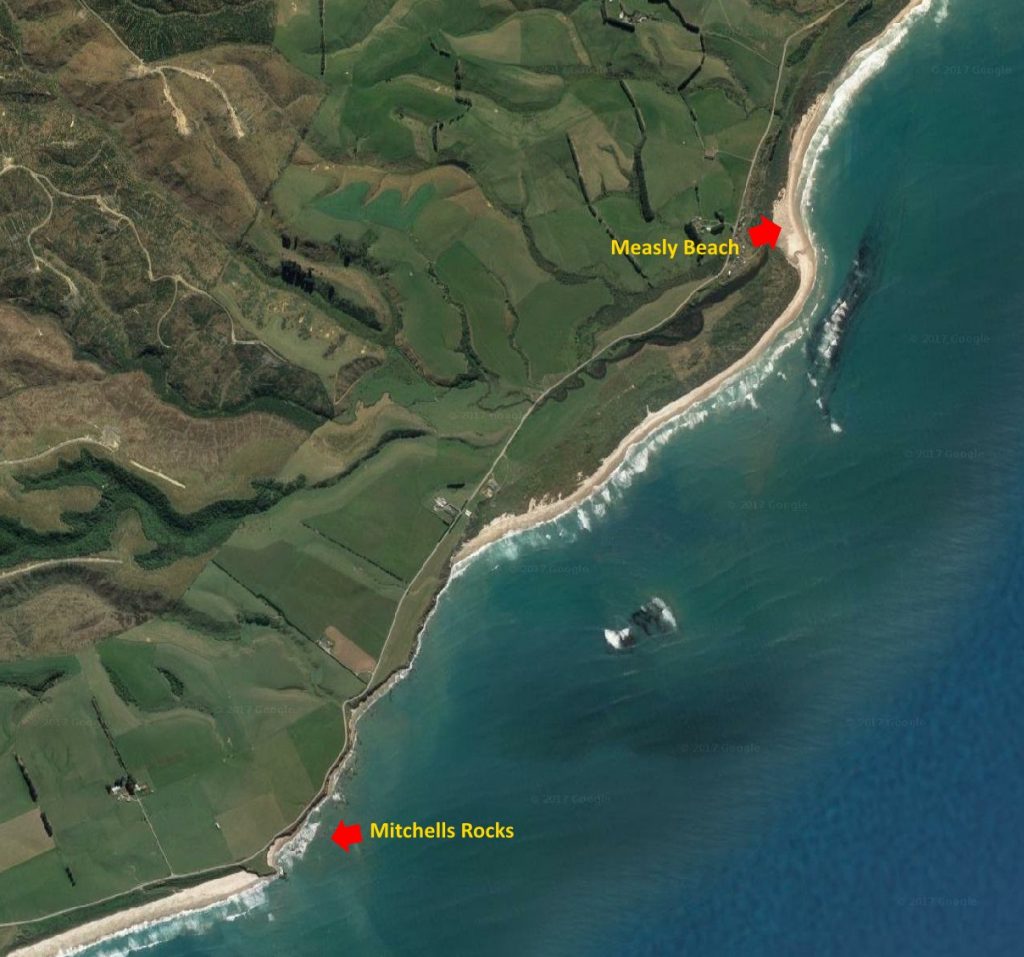
On a grim winter day I set forth with Dad along the southern motorway. We reached Milton, and rather than take the road to Cooks Head Rock and the final resting place of the Marguerite Mirabaud, we continued on to turn left at the church, making our way to Toko Mouth Rd. I peered at the Tokomariro River as we crossed the bridge, assessing it for winter fishing possibilities.
We followed the river all the way down to its estuary at Toko Mouth and pressed on south along Coast Rd, eventually reaching a small cluster of baches at a kink in the coast. This was our destination.
Stepping through the nearby gate we passed by the baches and through a field of old tractors. Shortly we found ourselves on a windswept stretch of sand next to the outlet of the Wangaloa Creek, scattered with storm-tossed debris.
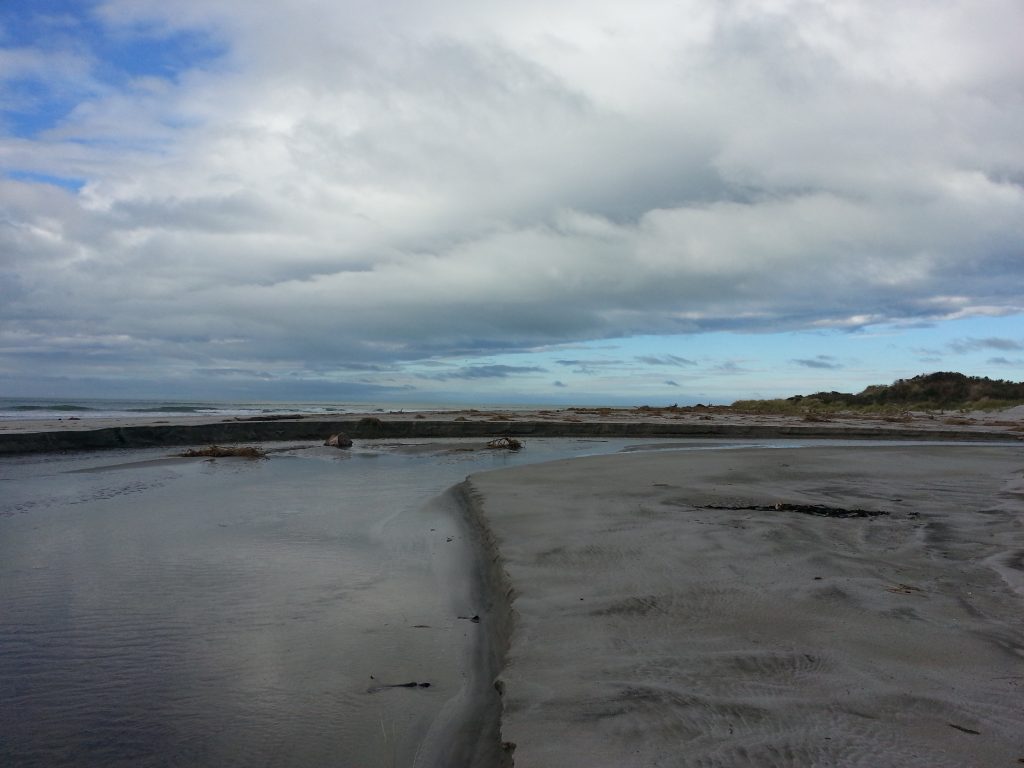
Had I come here a hundred and fifty years ago I might have wanted to watch my step not just for the driftwood, as the tales of early European settlers reported that it was still possible to stumble over human bones on this shore as late as 1850.
The terrible legend of this place was detailed in a lurid 1918 article in the Otago Daily Times, telling of a party of Maori travellers who came ashore here and perished painfully of measles, giving the beach its decidedly unfunny name. While packed with drama, the story nevertheless fails to mention the name or affiliation of any of these travellers, the reason for their journey, or any sort of date more specific than “long years ago”. Surely the victims of this plague deserve more than that.

Most accounts agree that the epidemic was brought by a whaling ship from Sydney, and that the event occurred in the 1830s. But for full explanation, I shall once again yield the stage to our old friend Atholl Anderson, who also helped us tell the stories of Mapoutahi, Whareakeake and Maori Leap. Not only does he give us the who and the how, he also allows us to place this happening into its proper historical context.
It was indeed during the 1830s that the tragedy occurred, a time when northern Ngati Toa chief Te Rauparaha was continuing his musket-backed incursions into the South Island territories of Ngai Tahu and Ngati Mamoe. In the summer of 1834 a force gathered at Ruapuke Island in Foveaux Strait with the intent of striking back at the invaders.
Sure enough, a ship did arrive from Sydney to drop off some Maori, including Tipo, a son of Te Pahi of Pukekura pa (which was located at Taiaroa head before albatrosses and gun emplacements took over). The avenging host set off in nine waka, but were soon overtaken by the illness and forced to come ashore here.
Behind the beach the Wangaloa Creek widens into a lagoon, where a couple of the old newspaper reports claim that the sickening voyagers built temporary shelters in which to wait out their illness.

Without the knowledge or skill to treat this dreadful new illness, about three hundred people are said to have died here. This included the leader of the expedition and principal chief of Foveaux Strait, Te Whakataupuka. Measles and other introduced epidemics continued to strike the southern Maori throughout the 1830s and 1840s, although due to lack of good historical records and conflicting reports it’s difficult to judge how severely they were affected.
Early reports said the Maori avoided this place, and I certainly can’t blame them. For our part, the only living thing we encountered was a Mimopeus opaculus beetle that wanted nothing to do with us.

Having finally seen this remote and haunted stretch of coast, we decided to retreat to our vehicle.
Not quite satisfied with the extent of our adventure, Dad mentioned that there were some fossils to be found in the cliffs further south. I readily agreed to take the opportunity to seek them out. So we tootled along the coastal road toward the vicinity of Mitchells Rocks until we found a little gully that allowed us to carefully make our way down to the foot of the cliff.

Our footing was iffy on the shifting pebble shore as we dodged the waves to follow the strikingly orange swirl-patterned cliff above us. Unable to spot any treasure in the limestone face, I turned dejectedly towards the fallen boulders being pounded by the surf, only to discover the vein I was searching for! I called Dad over and we examined the tightly packed seam of ancient shells.
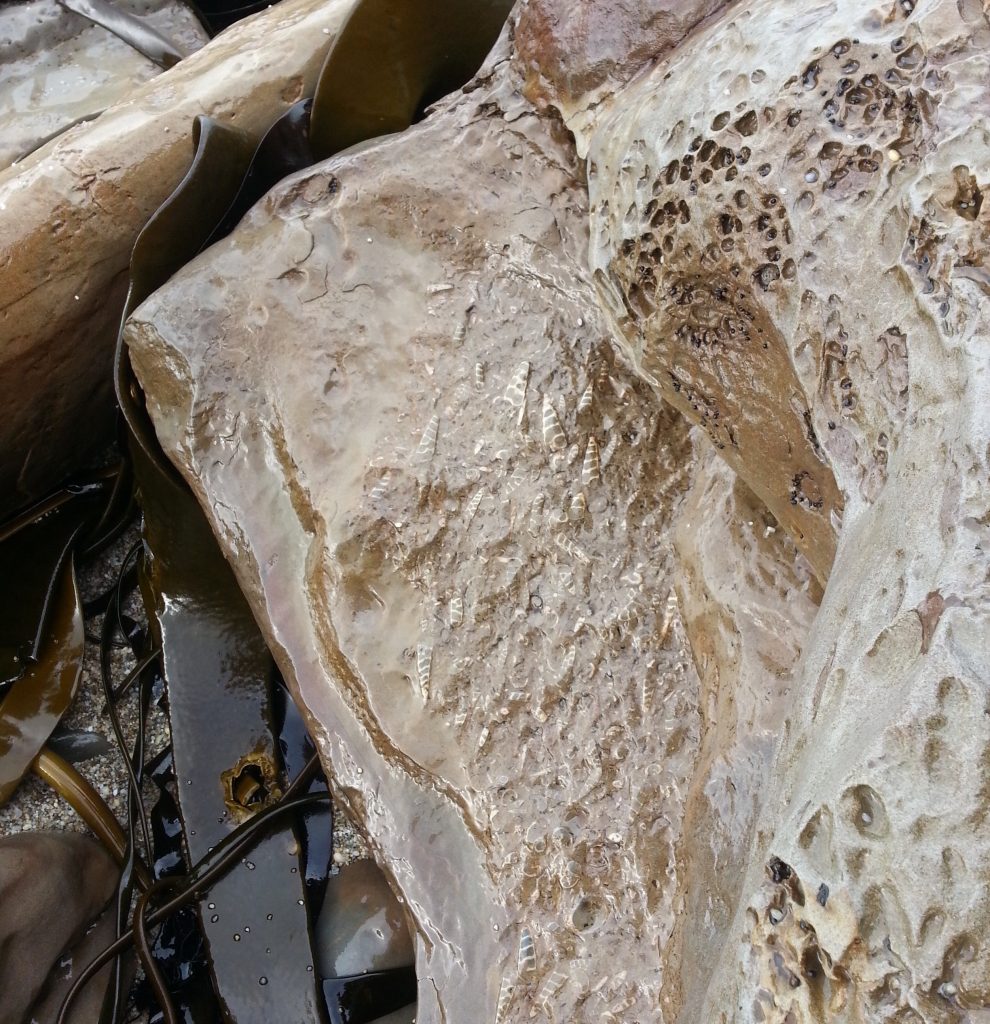
The rocks here form part of the 66 million year old Wangaloa formation, and the fossils found within it are important as they date back to the time just after the great extinction event which killed off the dinosaurs. Examining the remains to be found here, researchers can get a better idea of which organisms survived, which became extinct, and which eventually evolved to fill the newly vacant biological niches.

Six months ago I was enraptured by the opportunity to touch a four thousand year old monument, and today I’m touching a 66 million year old shell – I can’t even get my head around that kind of time frame! These critters were living on the sea bed before humans were even a sparkle in the eye of a rat-like mammal, while New Zealand was still a part of ancient Gondwanaland! Perhaps these fossils will endure even long after my own bones have turned to dust and all memory of my name has faded.
But while I’m still here, I can say “Hey, check out these cool rocks!”
And then, finally satisfied with our adventures, we can continue south to the Clutha River mouth and loop around to Kaitangata before rejoining State Highway One to take us back through Milton and thereafter to home.
From the million seashell survivors of Gondwanaland to the three hundred unlucky warriors who never reached their battle with Te Rauparaha, this coast may be barely inhabited today but it is still alive with stories. Perhaps another day we’ll discover more of its secrets.
References:
Local Native Names and Their Meanings. Bruce Herald, Volume XLV, Issue 5, 21 January 1909
HISTORY REPEATS ITSELF. Otago Daily Times, Issue 17484, 28 November 1918
The Welcome of Strangers: An Ethnohistory of the Southern Maori by Atholl Anderson
Back to the Cretaceous at the Catlins by Emma Lodes
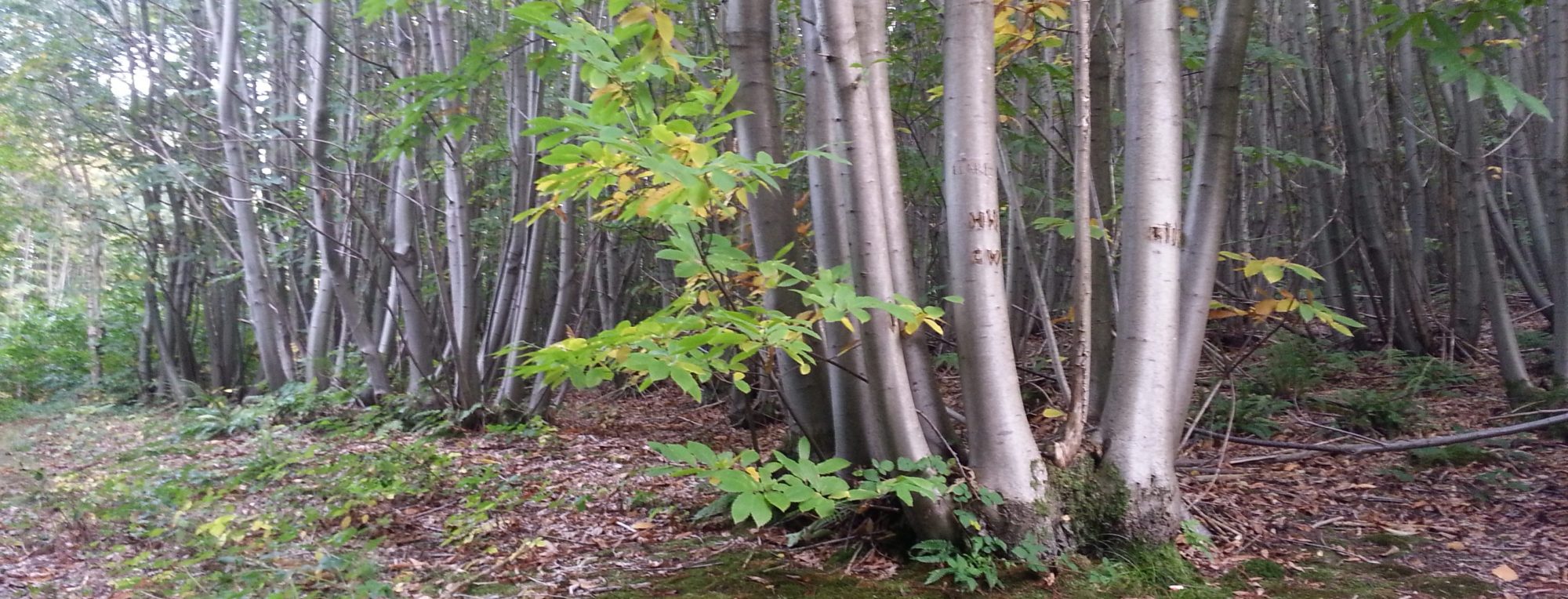


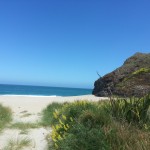
I’d like to follow your blog through WordPress but I’m not getting any “follow” prompts when I visit your page and I can’t find any “follow” buttons, even tho I am logged in to WordPress. I’m from Dunedin too (but just a newcomer). I do get notices of your blog posts via FB but I’d prefer to follow through WordPress if possible. Have I missed something?
Hi Liz, I’m glad you’d like to follow my blog! I’m not sure why you can’t, perhaps because it’s not hosted on wordpress.com. Maybe you can try the instructions here:
https://en.support.wordpress.com/following/#follow-a-blog-not-on-wordpress-com
Thanks heaps for the info. I’ve done that and will wait and see it it works!
Wow! Your newest post really did arrive in my WordPress feed! That’s awesome. Thanks for your help 🙂
Great news!
Another great story about our local area
I was born in Kaitangata in 1951
Both my parents and my Aunty had cribs at Measly Beach. As a child and teenager I spent many happy days being a kid on a beach at Measly. We found many artifacts and middens in the sand hills, speared flounder and swum in the creek. The creek warmed up nicely on a hot summer’s day. There is a reef in the sea at Measly which still holds its secrets to this day. More about these secrets at a latter date if anyone is interested. As a child I was told that the Maori contracted measles from a ship in Bluff. On returning home they stopped at Measly to cool off their fever in the creek and probably contracted pneumonia and died.
Hi Len , would love to hear some secrets about the reef at measley beach .
Good info len I was born in Balclutha in 1941 and as a kid we used to have large family picnics at Wangaloa and Measley beach I remember the clear stream we swam in and the stories of the Maoris trying to wash the measles from their bodies and dying. At that time i do not remember any cribs being there ,just a deserted beach Keith Richardson Ex school teacher